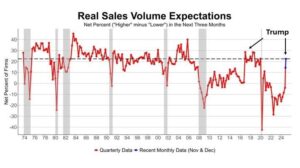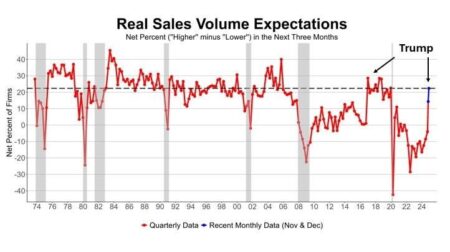Aniela Unguresan is the Founder of EDGE Certified Foundation and Founder & CEO EDGE Strategy.
When my daughter was born, I silently vowed to work toward a world where she would inherit a workplace that valued her thoroughly for her talents, ambitions and humanity. But today, as I reflect on the state of diversity, equity and inclusion (DE&I) in the workplace, I must admit a sobering truth: I cannot promise my daughter the world will be better when she enters the workforce.
Despite decades of advocacy, research and countless corporate commitments, we find ourselves, in many ways, stuck in the same place as the prior generation when it comes to workplace equity. Glass ceilings remain unbroken. Pay disparities persist. Bias—both conscious and unconscious—continues to shape decisions about who gets hired, who gets promoted and who gets to lead.
The Myth Of Progress
Over the last few decades, we’ve seen a proliferation of DE&I programs, initiatives and frameworks. Companies made ambitious pledges to increase representation and foster inclusion. Yet, these efforts often fell short of systemic transformation.
Take, for instance, the Women in the Workplace 2024 study, which begins: “In the tenth year of our Women in the Workplace research, in partnership with LeanIn.Org, we reflect on the notable gains women have made—and how their experiences at work are, in many ways, the same or worse than ten years ago.”
Our society may have built a façade of progress, but the foundation remains fundamentally flawed. Many organizations focus on optics, rolling out well-publicized diversity reports or touting surface-level changes. The disconnect between rhetoric and reality is often glaring. Public commitments do not always translate into meaningful, measurable outcomes.
The Focus On DE&I
Recently, DE&I initiatives have come under fire. Critics argue that these efforts are divisive, ineffective or even detrimental to meritocracy. Such narratives obscure the more profound truth: DE&I is not about giving anyone an unearned advantage; it is about removing the structural disadvantages that prevent equitable opportunities in the first place.
The rollback of DE&I programs is gaining traction. Some organizations are scaling back or even abandoning their initiatives altogether. Some critics have labeled DE&I as unnecessary or irrelevant—a luxury rather than a necessity.
Reconsidering Perceptions
Many people consciously or unconsciously place less value on women’s leadership. Research has consistently shown that women are held to higher standards than their male counterparts and penalized for exhibiting the very traits—ambition, assertiveness, confidence—celebrated in men.
Consider this: Despite representing around 40% of the global workforce, women occupy 10% of CEO roles in Fortune 500 companies. The barriers they face are not just about opportunity but about perception. Women are often seen as “risky” hires for leadership roles, while men are afforded the benefit of the doubt.
The Burden Of Proving Value
The challenge extends beyond gender. Intersectionality—a term coined by Kimberlé Crenshaw—reminds us that race, ethnicity, age, ability and other identities intersect to create unique experiences of discrimination. Women of color, for example, face both racial and gender biases, often finding themselves overlooked in discussions of equity.
When organizations fail to recognize these overlapping identities, their DE&I efforts risk excluding the very groups they aim to uplift. Progress requires acknowledging that equity is not a zero-sum game. Lifting one group does not mean diminishing another; it means creating a system where everyone has a fair chance to succeed.
The Role Of Leadership
What can leaders do to change this trajectory? The first step is acknowledging the scale of the problem. Let’s start by doing more than celebrating incremental gains or highlighting a few success stories. I suggest leaders confront the uncomfortable truth that systemic inequities remain deeply entrenched in many workplaces.
Accountability is crucial. Organizations should set measurable DE&I goals and hold themselves responsible for achieving them. Tracking representation and examining pay equity, promotion rates and employee satisfaction across demographic groups are some of the necessary actions. Transparency is key—sharing these metrics builds trust and signals a genuine commitment to change.
It’s also important for leaders to address the cultural barriers that perpetuate inequity. Challenging bias at every decision-making level and creating environments where diverse perspectives are valued, not just tolerated, can help unlock every employee’s full potential. Inclusion cannot be an afterthought; it must be a core principle that guides every aspect of organizational strategy.
For My Daughter, And Yours
When I say I cannot promise my daughter a better world, it is not because I lack hope. It is because I see the scale of the work still ahead. My daughter deserves a workplace that values her for who she is—not in spite of it. She deserves to thrive in a world where outdated stereotypes or systemic biases do not constrain her potential.
The same is true for every child entering the workforce. The next generation will inherit the consequences of our inaction—or the benefits of our resolve. If we want to create lasting change, we must act with urgency, ambition and courage. Progress is neither inevitable nor linear. It requires vigilance, advocacy and a willingness to challenge the status quo. Leaders are responsible for creating workplaces where equity is not just an ideal but a lived reality for organizations and the people within them to thrive.
The promise of DE&I is not just about fairness; it is about unlocking the full potential of our workforce, driving innovation and building sustainable businesses. It is about ensuring that no one—whether my daughter, your child or any individual—faces barriers simply because of who they are.
The world may not have changed enough for my generation, but that does not mean we stop trying. It means we redouble our efforts so that, one day, the vow I made to my daughter will no longer feel like a hope—but a promise fulfilled.
Forbes Business Council is the foremost growth and networking organization for business owners and leaders. Do I qualify?
Read the full article here











